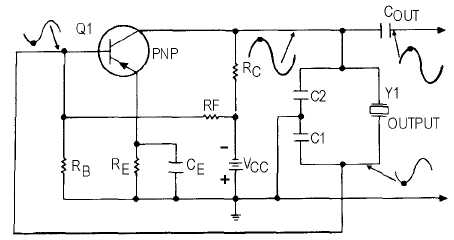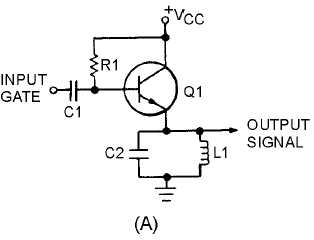2-28
Figure 2-24.—Pierce oscillator, common-emitter configuration.
Q-18. What is the impedance of a crystal at its resonant frequency when it is used in the parallel mode?
Q-19. What is the impedance of a crystal at its resonant frequency when it is used in the series mode?
PULSED OSCILLATORS
A sinusoidal (sine-wave) oscillator is one that will produce output pulses at a predetermined
frequency for an indefinite period of time; that is, it operates continuously. Many electronic circuits in
equipment such as radar require that an oscillator be turned on for a specific period of time and that it
remain in an off condition until required at a later time. These circuits are referred to as PULSED
OSCILLATORS or RINGING OSCILLATORS. They are nothing more than sine-wave oscillators that
are turned on and off at specific times.
Figure 2-25, view (A), shows a pulsed oscillator with the resonant tank in the emitter circuit. A
positive input makes Q1 conduct heavily and current flow through L1; therefore no oscillations can take
place. A negative-going input pulse (referred to as a gate) cuts off Q1, and the tank oscillates until the
gate ends or until the ringing stops, whichever comes first.
Figure 2-25A.—Pulsed oscillator.



